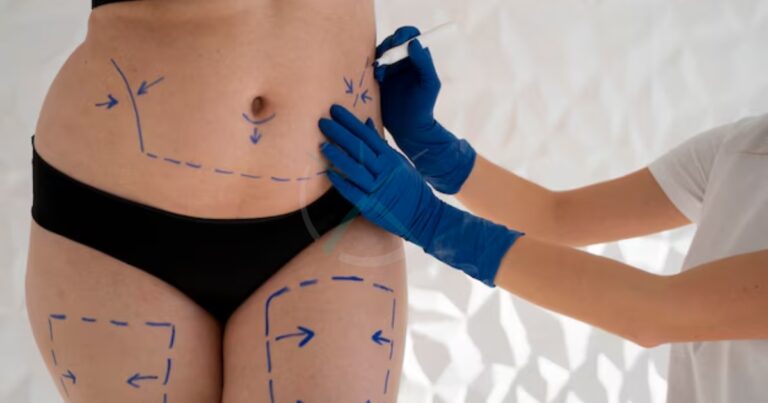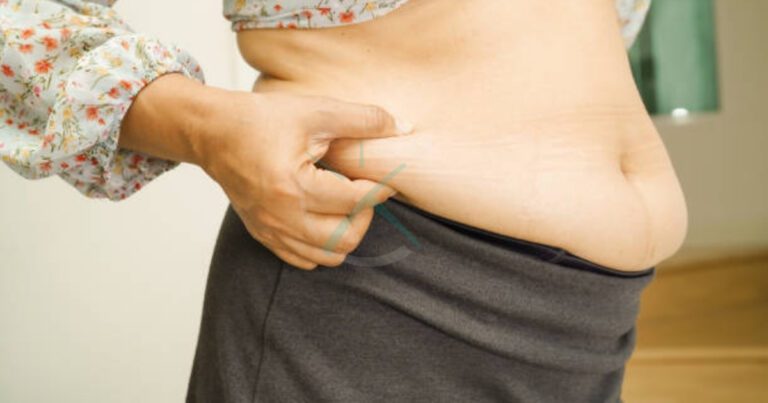Liposuction as an Obesity Treatment
Obesity is a growing global health issue, with many people seeking effective ways to manage their weight and improve their health. While liposuction is often thought of as a cosmetic procedure, it can also play a role in obesity treatment by targeting stubborn fat deposits that are resistant to diet and exercise. This guide explores how liposuction can support obesity management and how Dr. Tarek Bayazid can help you achieve your goals.
Understanding Liposuction as a Treatment for Obesity
What Is Liposuction?
Liposuction is a surgical procedure used to remove excess fat from specific areas of the body. It involves using a cannula (a thin tube) and suction to extract fat, resulting in a more contoured body shape. However, it’s important to understand that liposuction is not a primary method for weight loss but rather a body contouring technique.
Liposuction’s Role in Obesity Management
Though not a traditional weight-loss treatment, liposuction can help remove stubborn fat deposits that do not respond to diet and exercise. This can enhance body contours and provide a motivational boost for individuals pursuing long-term weight management strategies.
Liposuction vs. Traditional Weight Loss Methods
Liposuction offers immediate changes in body shape, unlike traditional weight-loss methods, which rely on gradual changes through lifestyle adjustments such as diet and exercise. It’s important to view liposuction as complementary to, not a replacement for, traditional weight management techniques.
Ideal Candidates for Liposuction
Who Should Consider Liposuction for Obesity?
The ideal candidates for liposuction are individuals who are near their target weight but struggle with localized fat deposits that are resistant to other methods of fat loss. A thorough consultation with a surgeon like Dr. Tarek can help determine if liposuction is the right option for you.
Setting Realistic Expectations
Liposuction is a body contouring procedure, not a weight-loss solution. Patients must have realistic expectations about the results. Understanding the limitations of the procedure helps ensure patient satisfaction.
The Liposuction Procedure
Preparing for Surgery
Before undergoing liposuction, patients undergo medical evaluations to ensure they are fit for surgery. The surgeon also explains the risks, benefits, and what to expect during and after the procedure.
The Liposuction Technique
During liposuction, a small cannula is inserted through tiny incisions to break up and remove fat. The procedure is typically done under anesthesia, and the surgeon focuses on removing fat in targeted areas to achieve the desired results.
Post-Liposuction Care
Recovery After Liposuction
Following liposuction, patients must follow specific post-operative care instructions provided by their surgeon. This often includes wearing compression garments to reduce swelling and improve healing and attending follow-up appointments to monitor progress.
Maintaining Results with Diet and Exercise
While liposuction removes fat, maintaining the results requires a commitment to a healthy lifestyle. A balanced diet and regular exercise are essential to support long-term weight management and prevent fat from returning to untreated areas.
Liposuction Outcomes 
Expected Results
Liposuction offers a more contoured body shape, but the full results can take several months to become visible as swelling subsides. Patients can expect to see gradual improvements in body contours during the recovery period.
Safe Limits for Fat Removal
The amount of fat that can be safely removed during liposuction varies by individual. Your surgeon will determine how much fat can be removed to ensure the best possible outcome without compromising safety.
Common Concerns About Liposuction
Is Liposuction a Weight-Loss Procedure?
Liposuction is not designed for weight loss but is an effective method for removing stubborn fat deposits. While patients may notice a slight reduction in weight, the procedure is primarily aimed at improving body contours.
Psychological Benefits of Liposuction
Many patients report increased confidence and improved body image following liposuction. These psychological benefits can be just as important as the physical ones, helping individuals feel more motivated to maintain a healthy lifestyle.
Combining Liposuction with Other Treatments 
Considering Additional Procedures
In some cases, liposuction may be combined with other obesity treatments or weight-loss surgeries. This can be part of a comprehensive approach to obesity management, which should be discussed with a healthcare professional.
A Holistic Approach to Obesity Management
For the best outcomes, liposuction should be viewed as part of a multi-faceted obesity management plan, which includes diet, exercise, and sometimes additional procedures, depending on the patient’s needs.
Long-Term Success After Liposuction
Commitment to a Healthy Lifestyle
To maintain long-term results after liposuction, patients need to commit to a healthy lifestyle. Balanced nutrition and regular physical activity are crucial for sustaining the benefits of the procedure and preventing future weight gain.
Importance of Follow-Up Care
Regular follow-up appointments with your surgeon are important for monitoring your progress and addressing any concerns that may arise after the procedure. This ensures the results are maintained and that any issues are resolved quickly.
FAQs About Liposuction for Obesity Treatment
How Much Weight Can You Lose with Liposuction?
The weight loss from liposuction is typically not significant in terms of pounds, as it is designed for fat removal and body contouring rather than weight reduction.
When Can I Expect to See the Full Results of Liposuction?
Full results from liposuction can take several months to become visible as the body heals and swelling decreases.
How Many Sizes Can You Lose with Liposuction?
The number of sizes lost after liposuction varies per individual and depends on the amount of fat removed and the patient’s overall body composition.





